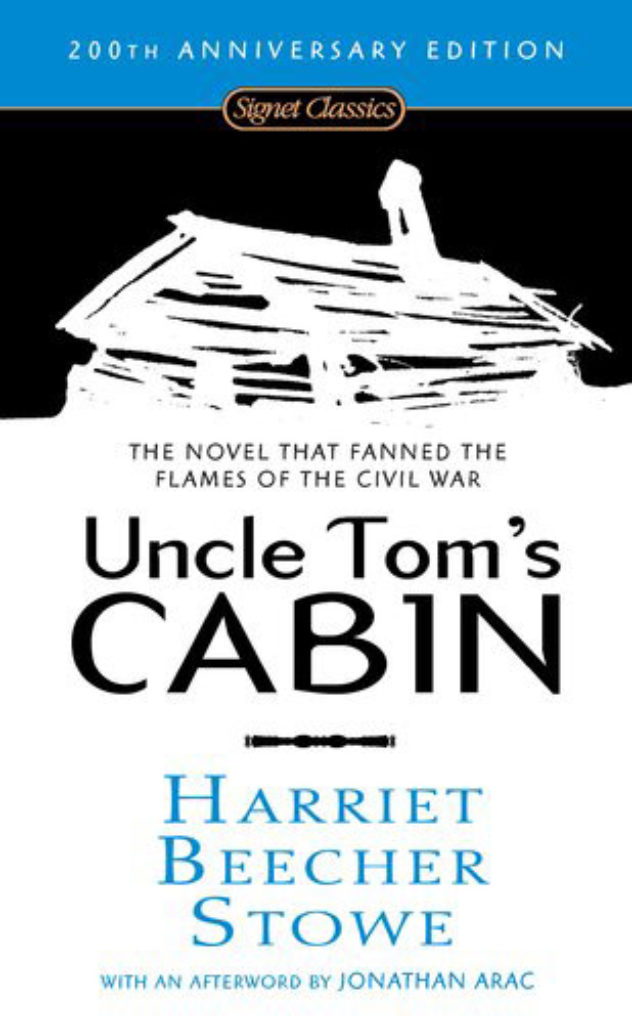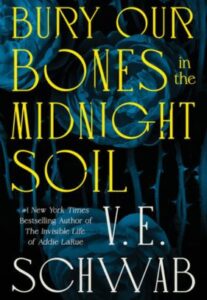The story follows the lives of two slaves, Tom and Eliza. Mister Arthur Shelby owns them and treats his slaves honestly and compassionately. Mr. Shelby falls into debt and must sell a slave or lose his property to Mr. Haley, a coarse slave trader. He accepts Tom as payment, but insists that Mr. Shelby also give him a young slave. Mr. Shelby agrees to sell Harry, Eliza’s young son, but asks for time to talk first to his wife. Eliza overhears their conversation and begs her mistress not to sell her son. Mrs. Shelby, unaware of her husband’s arrangements, assures her desperate maid that Harry will remain on the Shelby plantation.
That afternoon, Eliza’s husband, George Harris, comes to talk with her. A slave on another plantation, George’s master had hired him out to a factory where his light skin and intelligence made him a favorite. But Mr. Harris, George’s master, disapproved of his slave doing so well and insisted on his return. Harris beats George and talks about getting George a new wife since slave marriages are not legal. George tells Eliza that he plans on running to Canada where he will save money to help her and Harry escape.
Meanwhile, Arthur Shelby signs the papers to sell Tom and Harry. Shelby later tells his wife about the transaction. Mrs. Shelby is appalled because she has promised Eliza that Harry would not be sold. Eliza listens in on the conversation; she cannot bear to lose her son to a slave trader. She gathers her few meager belongings, bundles up her son and runs to Tom’s cabin. She informs him what has transpired. Tom will not try to escape as he feels it is his Christian duty to go wherever God intends him to go, but he urges Eliza to escape. She and her son flee into the night.
Haley arrives to take Tom away in fetters. Haley stops in town to have handcuffs made for Tom while Tom waits in the wagon. Young George Shelby arrives, hugs Tom and promises that when he’s older, he will track him down and buy him back. He ties a dollar around Tom’s neck as a sign of his promise.
In a nearby town, men discuss a handbill advertising the escape of George Harris, Eliza’s husband. It describes George as a mulatto who will probably try to pass as a white man but will be identified by the letter “H” burned into his right hand. One of the men in the discussion is Mr. Wilson, the owner of the factory where George used to work. A Spanish-looking gentleman then arrives and admits he may have seen the slave in question in a neighboring village. Mr. Wilson recognizes him as George but doesn’t give him away. George invites Mr. Wilson to his room where he explains his plan to escape to Canada by posing as a Spaniard. George’s impassioned arguments about a man’s right to freedom move Mr. Wilson, who promises not to turn him in.
Eliza and Harry find temporary sanctuary with the Halliday family in a Quaker settlement. Mrs. Halliday is surprised to learn Eliza’s last name is Harris because she’s heard that a George Harris is making his way to the settlement en route to Canada. Eliza and her husband are reunited that night and eventually escape to Canada.
On the boat heading to Haley’s plantation, a young girl named Eva befriends Tom and says she will ask her father to buy him so they won’t have to be parted. When Eva slips overboard, Tom dives into the river to save her. Her father, Augustine St. Clare, buys Tom from Haley.
St. Clare is a wealthy New Orleans gentleman married to Marie, a bitter and demanding woman, prone to imagined illnesses. St. Clare’s cousin, Miss Ophelia, has traveled home with him to help raise Eva and manage the house. Tom arrives in the St. Clare home, overwhelmed by its opulence.
Marie complains about the slaves. She doesn’t believe slaves form attachments to their families. When she can’t get any sympathy from St. Clare or Eva, Marie complains to Miss Ophelia. Miss Ophelia, an abolitionist, refuses to engage her in conversation about slavery. Marie’s whining contrasts starkly to her daughter’s extravagant love. Eva enjoys a house filled with slaves so that she can love them all. The slaves adore her and her father, but barely tolerate Marie.
Tom proves trustworthy to St. Clare. He worries for St. Clare’s soul as his master spends most evenings drinking, with no concern for the Lord. Tom pleads with St. Clare to stop his sinful ways and seek God. St. Clare promises to try and live a better life.
St. Clare buys a young slave girl for Miss Ophelia to train and raise as a Christian. The slave, Topsy, is a bright but incorrigible girl who never knew her parents. A speculator — one who buys young slaves and raises them to sell — reared her. She is uneducated and ignorant of God. St. Clare and the other slaves argue that the only way to train Topsy is to whip her, but Miss Ophelia rejects the idea. She begins to comprehend St. Clare’s complaints that the slaves can’t be freed because they don’t know how to behave in society.
Tom continues to gain responsibilities in the St. Clare household as he and Eva grow closer. He makes her small gifts and buys her small tokens from the market, and she reads the Bible to him. The family moves to Lake Pontchartrain for the summer when Eva’s health begins to deteriorate. Tom and Eva spend hours together reading Revelation and the prophecies. Tom teaches her hymns. Eva claims to have seen angels and tells Tom that she soon will be going with them to heaven.
Eva’s health continues its decline. She begs her father to free their slaves or at least work toward making slavery illegal after she dies. It is the work she would have done had she lived. She tells him she would gladly die if it would set the slaves free. Her father promises to do what he can and to at least set Tom free in the near future. Eva speaks of going to be with the Lord and hopes that her father will live as a Christian so they can be together forever in heaven.
One afternoon Miss Ophelia confronts St. Clare, telling him she can no longer be in charge of Topsy. The slave is belligerent, mischievous and unteachable. As they bicker, Eva pulls Topsy into another room and asks if she loves anyone. The slave explains that she never has known love. She never knew her parents or siblings; she’s been raised as a slave her entire life, and none of her masters have shown her any affection. Eva pleads that Miss Ophelia would love Topsy if she would only be good. Topsy laughs and says that Miss Ophelia doesn’t even want Topsy to touch her because she’s black. Eva embraces Topsy and pronounces her love for the slave girl. Eva promises that Jesus loves Topsy even more. If Topsy would only believe in Christ, she would know His love. Eva begs Topsy to become a Christian so she will see her again in heaven.
Topsy breaks down, promising to try to be good and become a Christian. Miss Ophelia, who has listened in to their conversation, is appalled that Topsy sensed her aversion to the slave’s touch. Eva’s unconditional love spurs Miss Ophelia to be more accepting. She hopes by observing Eva, she can learn to be a better follower of Christ.
Tom spends his nights in vigil outside of Eva’s room, as he knows her death is imminent. Eva asks Miss Ophelia to cut off her beautiful golden curls. Eva then calls all the slaves to her room to say goodbye. She gives them each a lock of her hair to remember her by and commands them to love each other and God. Her father, mother and cousin stand by her bedside as she dies. She asks if her father is a Christian and tells him of the wonderful world she will reside in soon. He is jealous of her passion, but cannot accept it for himself. He asks her to explain what she sees. As she breathes her last breath, she tells him excitedly she sees a land of love, joy and peace.
Eva’s death sends the house into mourning. Marie insists on the slaves’ full attention as she bemoans her loss. St. Clare hides in his study. Finally, Tom begs his master to trust in God so that his faith can bring him peace. When St. Clare puts him off, Tom goes into another room and prays fervently for his master’s salvation. St. Clare overhears Tom’s prayers and for the first time is moved to believe there may be some truth to Tom’s beliefs.
Miss Ophelia approaches St. Clare and asks for legal possession of Topsy. Ophelia has let go of her own prejudices and, through her own transformation, has been able to preach God’s love to the slave. Topsy is reformed. Miss Ophelia wishes to bring the girl home to New England and set her free. When St. Clare agrees, Ophelia demands he write the document of transfer immediately as she doesn’t want to risk losing Topsy to an unkind slave owner should a tragedy befall St. Clare. She wonders if he has made any provisions for his own slaves in case of his untimely death, and he assures her he will do so soon. Unfortunately, he dies that night from a fight in a tavern. He begs Tom to pray for him and mumbles his own prayers. His eyes then open wide with happiness, and he calls for his mother as he dies.
The slaves then become Marie’s property. She immediately decides to teach them a lesson by ordering the whipping of one of her maids. Others plead for mercy, but Marie is adamant the slave be taught a lesson for her perceived insolence. Marie then ships the rest of the household to the slave warehouse to be sold so she can have the money when she moves back to her father’s home. Miss Ophelia begs Marie to at least set Tom free, but she refuses.
In the slave warehouse, the reader is introduced to a young slave named Emmeline, a beautiful, light-skinned slave. She and Tom are sold to a gruff man named Simon Legree. Legree sells all of Tom’s nice clothes and throws away Tom’s hymnbook. Religion isn’t tolerated. Tom hides his Bible inside his shirt. Legree threatens his slaves with violence if they don’t obey his every command.
Legree lives alone with only the slaves for company. One slave, Cassy, lives in his house as his mistress. He bought Emmeline to replace her. Two slave overseers keep order through brutality. Legree hopes that Tom will take over as foreman but soon learns that Tom lacks a brutal nature. When Cassy misbehaves, Legree instructs Tom to whip her. He refuses, and he is whipped almost to death by the overseers.
Tom’s faith is sorely tested by the prevalent evil on Legree’s plantation, but a vision of Eva restores his hope. Cassy sneaks to Tom’s side to give him some water and attend to his wounds. She tells him there is no God. He begs her not to let the evil around them keep her from God’s love. She tells him her story.
Cassy is a mulatto, the daughter of a slave and her master. She grew up in luxury under her father’s care and fell in love with a lawyer. He took her as his mistress, and they had two children. When the lawyer fell in love with another woman, he sold Cassy to a new owner and sold away her children. When Cassy became pregnant by her third master, she killed the child rather than see it sold into slavery. Eventually, she was sold to Legree and suffered violence and sexual abuse from him.
One day, while Legree argues with Cassy, an overseer brings him the lock of Eva’s hair that Tom had worn in a locket around his neck. Legree looks at the curl as if it were cursed. The reader learns that Legree’s mother had golden hair like Eva’s and had sent a lock of it to him as she lay on her deathbed. The accompanying letter claimed that she forgave him for abandoning her and her faith for a life at sea.
He flees the house and his memories in search of Emmeline, but hears Tom leading the other slaves in a hymn. Legree fears Tom’s faith and turns back. The following day he tells Tom to beg his forgiveness, but Tom refuses. He has been given a vision, in which he saw the sufferings of Christ. Jesus has promised him a great reward in heaven if Tom can remain faithful for a little while longer on this earth. Cassy tells Tom that she wants to kill Legree. He pleads with her to try and escape instead, and she agrees.
Cassy remembers rumors that the garret in Legree’s house is haunted. She tells him that she’s recently heard noises up there and seen strange things along the hallway. She and Emmeline then pretend to escape. They run into a nearby swamp, but when all the slaves and Legree leave the plantation to search for them, they sneak back to the house and hide in the attic. There, Cassy has stashed an ample supply of food.
When the dogs tracking the pair lead Legree back to his house, he figures they have lost the scent. He is enraged that the women have eluded him and believes Tom knows something about their plan. He calls Tom and demands that the slave tell what he knows. Tom refuses. He tells Legree that he will do any work his master demands, but he won’t harm another slave or say anything that will get them in trouble.
For a moment Legree seems to weigh what he will do with Tom’s answer, but his anger soon outweighs Tom’s goodness. Legree vows to beat him until Tom submits. When Legree is too exhausted to hit him anymore, he calls in his overseers to continue the punishment. As Tom lies close to death, he forgives the other slaves for their hand in his murder. They are moved by his faith and eventually accept Christ. He prays for their salvation.
A few days later, young George Shelby, son of Tom’s first master, arrives at the Legree plantation in search of Tom. Tom’s wife has secured enough money to buy Tom back, and now that George’s father has died, he has come to make good on his promise to free his friend. George’s presence comforts Tom and he dies contented.
George promises to bring Legree up on murder charges. Legree laughs that a white man cannot be prosecuted for a slave’s murder. George must be satisfied with punching the evil man in the face. George asks the overseers to help him bury Tom’s body. Legree’s other slaves are moved by George’s compassion and beg him to buy them and take them away. George is sorry he can’t afford to buy them but promises to work to end slavery.
Cassy and Emmeline escape from the house while Legree is in a drunken stupor. Because of their light skin, Cassy disguises herself as a free Creole woman traveling with her servant. They happen to board the same boat north as George Shelby. Fearing that he might know who she is because of Legree’s description, Cassy confesses everything, and he promises to do everything he can to help her escape.
Another passenger, Madame de Thoux, overhears George talking about his home and questions him. She explains that she was born a slave and sold away from her mother and brother at a young age. The man who bought her brought her to the West Indies and married her. Now a widow, she’s returned to America to find her brother. George’s description of Eliza’s husband matches that of this woman’s brother. Cassy has been eavesdropping on their conversation and faints. When she comes to, she explains that she is convinced that Eliza is her daughter.
George and Eliza Harris are settled into the free life in Canada. George works in a machine shop, and Eliza has had another baby. One day Cassy and Madame de Thoux surprise them with a visit. The families are reunited with their loved ones. Madame de Thoux uses her substantial inheritance to help them emigrate to France where George studies at a university. Not much is known about the ensuing years, other than that the family later emigrated to Liberia, a country set up as a homeland for freed slaves.
George Shelby returns home and gives the sad news of Tom’s death to his wife. He then presents all of his slaves with papers of freedom. They implore him not to send them away. He agrees to let them stay on as long as he can pay them. They will be freed when he dies. He then tells them of Tom’s life and legacy and asks them to remember the kind man every time they see his cabin.
In the final chapter, Harriet Beecher Stowe relates that she has either been a witness herself, or has reliable evidence, to all of the incidents in her book. She makes an impassioned plea to Northerners and Southerners to honor God and end the evil of slavery.









